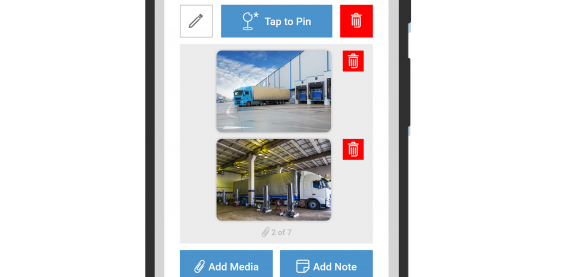Key Points
- Cost-effective learning and scalability: Affordable LMS platforms offer flexible pricing models like pay-per-user or freemium options, enabling organizations to scale education and training without significantly increasing costs.
- Essential features without compromise: Budget-friendly LMS platforms provide key tools like course management, progress tracking, quizzes, mobile access, and basic customization, ensuring quality learning experiences.
- Open-source and cloud-based options: Solutions like Moodle (open-source) and XRMentor (cloud-based) offer affordable, feature-rich platforms with minimal setup and maintenance costs, making them accessible for smaller organizations.
- Customizable pricing models: Affordable LMS platforms offer flexible payment options, including freemium, pay-per-user, and subscription-based models, catering to varying educational and business needs.
In today’s fast-paced digital world, organizations and educators are increasingly relying on Learning Management Systems (LMS) to facilitate learning, track progress, and manage educational content. But the challenge many face, especially smaller institutions or businesses with tight budgets, is finding an affordable LMS that delivers powerful features without breaking the bank. Luckily, there are several budget-friendly LMS options that cater to various educational and corporate training needs.
Here’s how affordable LMS platforms are empowering education and training on a budget, without compromising on quality:
1. Cost-Effective Learning at Scale
For both small businesses and large institutions, an affordable LMS allows the scaling of education and training programs without proportionally scaling costs. This flexibility is essential for startups, nonprofits, or schools that are looking to deliver effective learning experiences on limited resources. Affordable systems come with competitive pricing models such as pay-per-user, freemium options, or tiered subscriptions, ensuring that you only pay for what you use.
2. Key Features of Affordable LMS
Just because a system is affordable doesn’t mean it lacks essential features. Many low-cost LMS platforms offer tools like:
- Course Management: Simple creation and management of courses, including scheduling and assignments.
- Progress Tracking: Ability to monitor learner progress and generate reports.
- Quizzes & Assessments: Built-in tools for testing and assessing learner knowledge.
- Mobile Access: Learners can access their courses on any device, which is crucial in today’s mobile-first world.
- Customization: Many affordable LMS platforms allow basic branding and customization, giving educators control over the look and feel of their learning portals.
3. Open-Source LMS: A Budget-Friendly Option
For organizations that require more customization and control, open-source LMS platforms offer the most affordable solutions. Platforms like Moodle and Open edX are widely used, offering robust functionality with little to no licensing costs. Though these platforms may require technical expertise for setup and maintenance, they can be ideal for organizations with in-house IT resources or a small budget for development.
Moodle, for example, is an open-source LMS that supports a wide range of course types, integrates with various third-party tools, and offers a global community of support—all at little to no cost.
4. Cloud-Based LMS for Hassle-Free Management
Another factor contributing to affordability is the cloud-based nature of many modern LMS platforms. Cloud-based systems require no physical servers, eliminating the need for maintenance, updates, or additional IT support. Providers like TalentLMS, Google Classroom, LearnUpon, and XRmentor ®, an AR-enhanced LMS, offer user-friendly, cost-effective options for schools, small businesses, and growing enterprises.
XRMentor ® takes cloud-based LMS to the next level by integrating augmented reality (AR) to enhance the learning experience. This feature allows learners to engage with immersive, hands-on training simulations in a virtual environment, bridging the gap between theory and practice. Whether for technical skills or real-world applications, XRmentor’s AR capabilities bring an innovative edge to traditional LMS tools while remaining affordable for organizations looking to adopt cutting-edge technology.
This hosted infrastructure allows organizations to focus on the learning experience rather than technology management, further reducing operational costs and maximizing training effectiveness.
5. Customizable Pricing Models
Many LMS providers offer customizable pricing models, designed to suit different needs. For example:
- Freemium: Platforms like TalentLMS provide free versions with limited features, which can be perfect for smaller groups or organizations that only need basic functionality.
- Pay-Per-User: This model allows you to pay based on the number of users, making it a great option for businesses that may have fluctuating training needs. Design Interactive’s solutions are an example of a platform that offers flexible payment plans.
- Subscription-Based: Affordable monthly or yearly subscriptions from LMS providers such as Thinkific or Teachable can cater to individuals and small organizations looking to deliver quality learning without long-term commitments.
6. Why Invest in an Affordable LMS?
Investing in an affordable LMS gives educational institutions, businesses, and individual educators the tools to:
- Increase accessibility: Learners from anywhere can access content, leveling the playing field for geographically dispersed teams or students.
- Save time: Automating processes like tracking, reporting, and certification frees up time for administrators and educators.
- Boost learner engagement: Interactive tools like gamification, quizzes, and multimedia content enhance the learning experience, ensuring higher engagement.
- Support employee training: Small businesses can use LMS platforms for onboarding, compliance training, or professional development, ensuring employees are equipped with the latest skills.
7. How to Choose the Right Affordable LMS
When choosing an affordable LMS, consider the following:
- Ease of Use: Look for a system with an intuitive user interface so both learners and administrators can navigate it with ease.
- Support & Community: Even affordable LMS platforms should offer adequate support. Some also come with a large community of users that share resources and troubleshooting advice.
- Integration: Ensure the LMS integrates with other tools you already use, such as CRMs, HR systems, or content authoring tools.
- Scalability: Pick a system that can grow with you. Even if you’re on a tight budget now, your needs may expand as your user base grows.
Conclusion
Affordable LMS platforms offer a powerful combination of flexibility, scalability, and features that make them an excellent option for institutions, educators, and businesses alike. Whether you’re a small school needing to manage student coursework or a business looking to train employees without the overhead, there is an affordable LMS out there to meet your needs.
By finding the right LMS, organizations can unlock the benefits of digital learning without overextending their budget, proving that quality education and training are not limited by cost.
What LMS platforms are you considering, or are you currently using? Share your experiences in the comments below!













